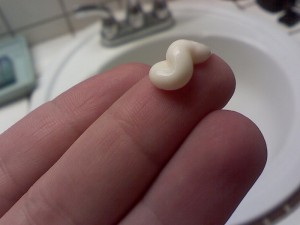Researchers at Yale have developed a sunscreen made with bioadhesive nanoparticles that is not only waterproof, but does not penetrate the skin barrier, eliminating the health concerns associated with commercial sunscreens.
While sunblocks are good at preventing sunburn and decreasing the risk of skin cancer from sun exposure, nanoparticles designed to reflect or absorb cancer-causing ultraviolet light, can go below the skin’s surface and enter the bloodstream. As a result, they pose possible hormonal side effects and could even be promoting the kind of skin cancers they are designed to prevent.
The new sunblock with bioadhesive nanoparticles stays on the surface of the skin. To make this sunblock, scientists developed their own nanoparticle with a surface coating rich in aldehyde groups, which sticks to the outer skin layer. This layer essentially locks in the sunscreen’s active ingredient, which is a hydrophobic chemical called padimate O. This stops it from being absorbed into the skin.
They found that when they applied this sunblock to the skin, it does not come off, and more importantly, it does not penetrate any further into the skin. Nanoparticles are large enough to keep from going through the skin’s surface, and these newly developed nanoparticles are so adhesive that they don’t even go into hair follicles, which are relatively open.
Using mouse models, the researchers tested their sunblock against direct ultraviolet rays and their ability to cause sunburn. They found that despite their sunscreen containing a significantly smaller amount of the active ingredient than commercial sunscreens, the new formula protected just as well against sunburn.
They also looked at the indirect effect of UV light. When the active ingredients of sunscreen absorb UV light, a chemical change triggers the generation of oxygen-carrying molecules known as reactive oxygen species (ROS).If these ingredients penetrate the skin, the chemical change could cause cellular damage and even possibly trigger skin cancer.
Previous studies have found traces of commercial sunscreen chemicals in users’ bloodstreams, urine, and breast milk. There is evidence that these chemicals cause disruptions with the endocrine system, such as blocking sex hormone receptors.
To test penetration levels, the researchers applied strips of adhesive tape to skin previously treated with sunscreen. The tape was then removed rapidly, along with a thin layer of skin. The process was repeated to remove the majority of the outer layer of skin, which is often dead, so the scientists could measure how deep the chemicals had penetrated the skin. Traces of the sunscreen chemical administered in a conventional way were found to have soaked deep within the skin but the Yale team’s sunblock came off entirely with the initial tape strips.
Tests also showed that a substantial amount of the Yale team’s sunscreen remained on the skin’s surface for days, even after exposure to water, potentially making it useful on the beach.When wiped repeatedly with a towel, the new sunblock was entirely removed.Traditional sunblocks containing larger particles of titanium dioxide or zinc oxide don’t penetrate the skin. Also they are greasy and show up white on the skin, meaning they are not very popular.
However, the Yale formula is transparent, yet stays out of the skin cells and bloodstream.
For more information please visit: www.yale.edu

